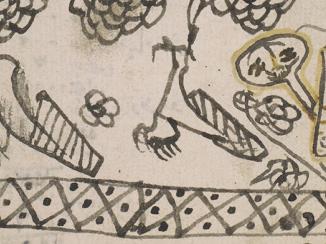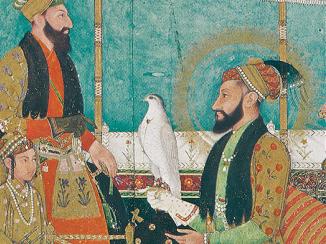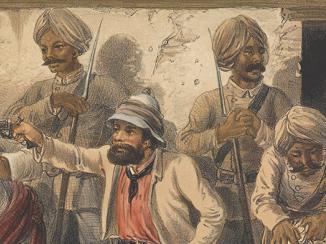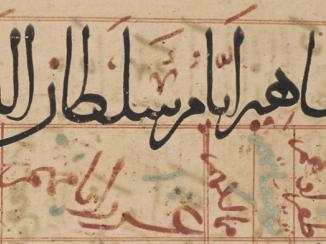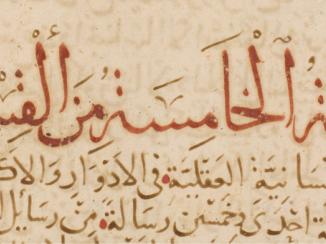Overview
Introduction
In the late fifteenth century, Cairo was the epicentre of astronomical activity in the Arab world. A complex network of multi-talented scholars taught, collaborated with, and in some cases were related to each other.
Shams al-Dīn Abū ʿAbd Allāh Muḥammad Ibn Abī al-Fatḥ al-Ṣūfī (active ninth-tenth century AH/late fifteenth-early sixteenth century CE) was a proficient and influential member of this group. Around twenty six works are attributed to him, mainly on the subjects of mathematical astronomy and timekeeping (mīqāt), which had been developed by a line of important predecessors, earlier in Damascus and then in Cairo. These included Ibn al-Shāṭir (d. 777/1375), Jamāl al-Dīn al-Māridīnī (d. 809/1406) and Ibn al-Majdī (d. 850/1447), and their students Sibṭ al-Māridīnī (b. 826/1423), and ʿAbd al-ʿAzīz al-Wafāʾī (d. c. 875/1471). Most of them were professionally associated with mosques or other institutions as muwaqqits (timekeepers).
Al-Ṣūfī’s connections with these scholars – especially al-Wafāʾī – were not only intellectual but also personal, as can be gleaned from paratextual manuscript sources including ownership notes, marginal comments, and reading certificates.
Astronomer
Al-Ṣūfī is primarily remembered as an astronomer who published an important zīj (a genre typically including tables of astronomical and calendrical data with explanations, specific to a particular location). Al-Ṣūfī’s is a simplified version, adjusted for the longitude of Egypt, of a widely-used zīj compiled in Persian for the astronomer-prince Ulugh Beg of Samarqand (796-853/1394-1449) around 844/1440.
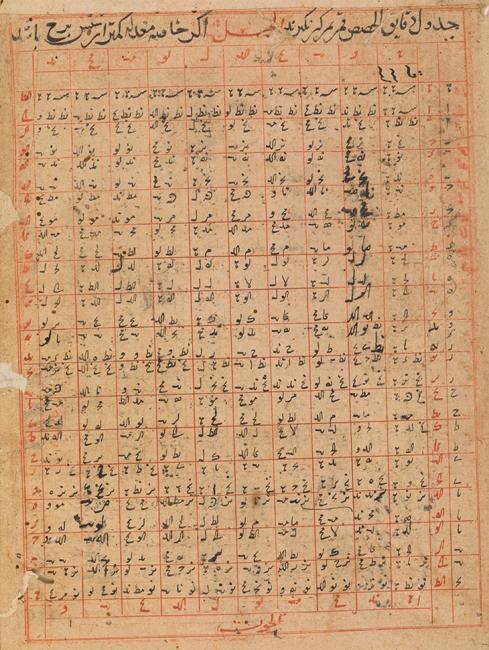
Al-Ṣūfī’s zīj was a collaborative project using a translation of Ulugh Beg’s introduction, which al-Ṣūfī commissioned from his student, Yaḥyá ibn ʿAlī al-Rifāʿī (cf. Paris BNF Arabe 2534). Al-Rifāʾī also claimed to have translated and completed the Arabic version of the fourth chapter of this work, as al-Ṣūfī died before its completion.
Copyist
Al-Ṣūfī’s legacy includes a number of holograph manuscripts (wholly copied out by the author himself), many now held at the Egyptian National Library and Archives in Cairo. In one colophon Section at the end of a manuscript text. , dated 897/1491-2, he gives additional elements of his name: ‘Muḥammad ibn Abī al-Faṭh Muḥammad ibn al-Sharafī Abī al-Rūḥ ʿĪsá bin Aḥmad al-Ṣūfī al-Shāfiʿī al-Miṣrī’. He has also been identified as the scribe of a unique copy of Ibn al-Shāṭir’s treatise on an enigmatic observational instrument he invented, called the ‘Box of Jewels’ (Ṣandūq al‐Yawāqīt).

Besides writing out his own treatises and those of others, al-Ṣūfī also left further manuscript notes that testify to his intellectual connections. His ownership inscription, dated 906/1500-1, appears on a 840/1436 copy of a commentary by Ibn al-Majdī on the extremely influential Epitome of the Operations of Arithmetic (Talkhīṣ aʿmāl al-ḥisāb) by the Maghribī mathematician al-Marrākushī, known as Ibn al-Bannāʾ (d. 721/1321).
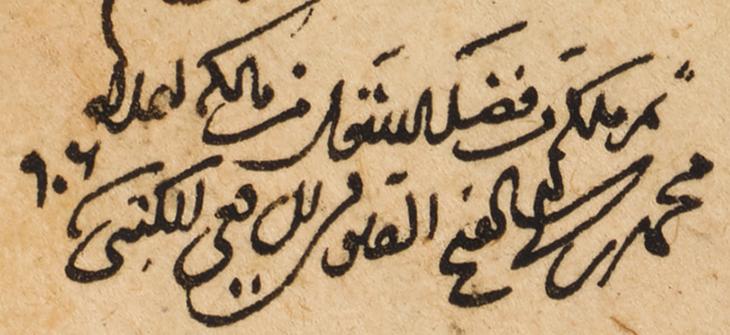
Hands-on: al-Ṣūfī the maker
In addition to mathematics and astronomy, Al-Ṣūfī wrote works on mechanics and instruments, including a treatise on the use of sand-clocks entitled Al-I‘lām bi-shadd al-minkām. However, unlike many of his contemporaries, al-Ṣūfī was not a prolific instrument-maker. His skills as a craftsman lay in a different field, as indicated by his alternative nisbah, ‘al-Kutubī’. The Arabic word kutub means ‘books’ (i.e. manuscripts), and the epithet kutubī normally indicates a book trader. However, booksellers in fifteenth-century Cairo were not mere merchants, and often played an active role in the production of manuscripts.
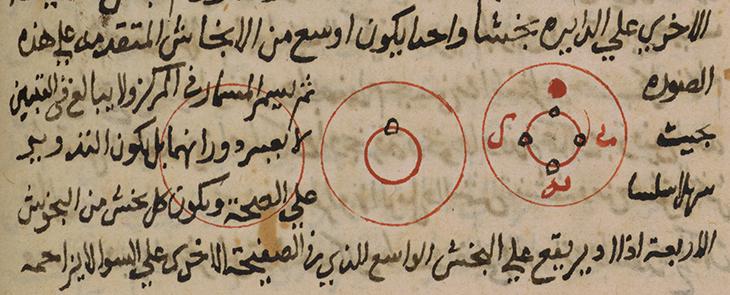
Evidence of al-Ṣūfī’s accomplishments as a bookmaker is found in perhaps his most unlikely publication. This abridged description of Egypt entitled Kitāb al-ṣafwah fī waṣf al-mamlakah al-Miṣrīyah is known in only one copy, created by al-Ṣūfī himself. In the volume’s colophon Section at the end of a manuscript text. , al-Ṣūfī casually namedrops his multiple talents, describing himself as ‘thankful, entreating and obedient’ to have been ‘honoured with the worthy instruction to compose, copy, illuminate, and bind it’ (Or 3392, f. 68r, lines 4-10).
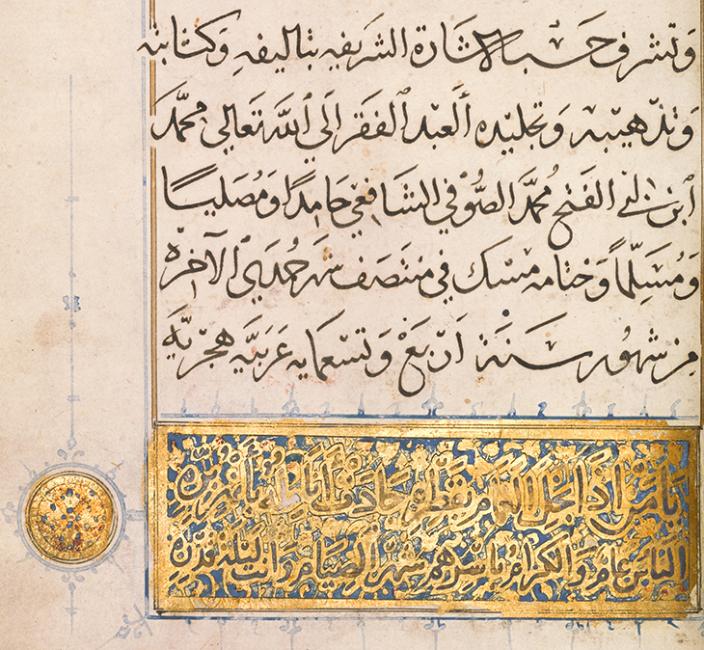
The original envelope-flap binding survives only as a shadow on flyleaf iv-r. Nevertheless, the high quality of the calligraphy and the lavish gold, blue, and red illumination of its frontispiece demonstrate that his epithet ‘al-Kutubī’ was amply deserved.
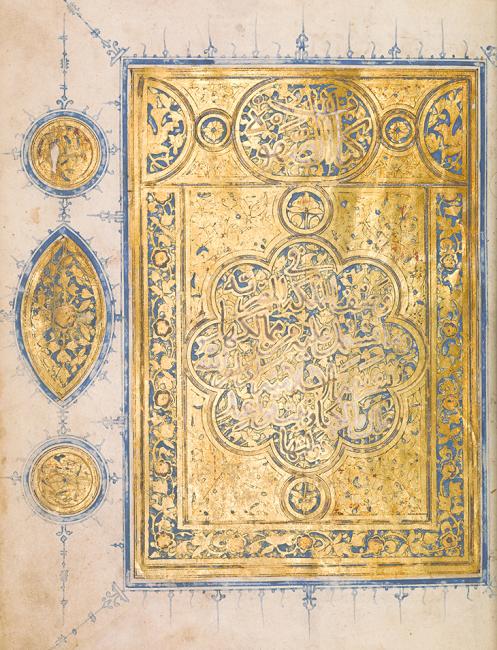
The Family Business: Al-Ṣūfī and Son
One recently-discovered copy of a transmission certificate shows al-Ṣūfī in another light: a father eager to encourage his son’s education. This unique document, dated 20 Jumādá I 875/14 November 1470, appears at the end of a copy of Simplification and Clarification Concerning Analysis and Compilation (Kitāb al-tashīl wa-al-taqrīb fī al-ḥall wa-al-tarkīb) and was authorised by none other than al-Wafāʾī, disciple of the text’s author, Ibn al-Majdī.
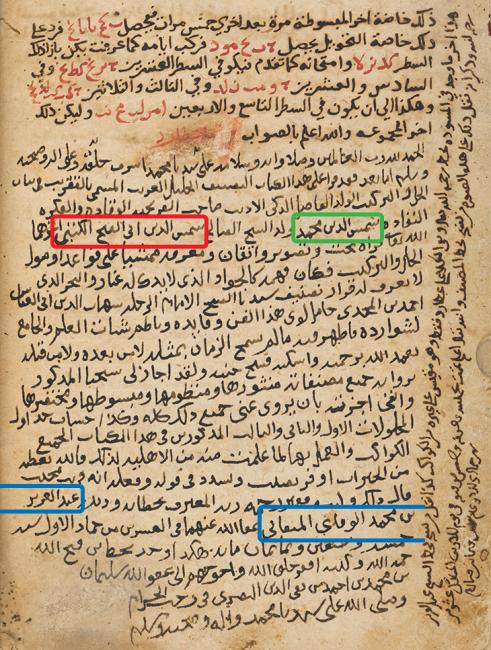
Here al-Wafāʾī records that the treatise ‘was recited to me by the virtuous, clever, and well-mannered young man, possessor of zeal and penetration, Shams al-Din Muḥammad, son of […] Shams al-Dīn Abū al-Fatḥ al-Kutubī […] He recited it at a good pace, with accuracy, mastery, and knowledge [...]. His understanding was that of an unsurpassable racehorse, and like the unfathomable sea’.
Clearly, Shams al-Dīn the Younger was a highly active participant in the family business of astronomy, albeit guided by his own father in his apprenticeship. Al-Wafāʾī meanwhile was a well-connected personal witness to the life and works of Ibn al-Majdī, and now an old man, near death. The vignette recorded here suggests that al-Ṣūfī wished to ensure al-Wafāʾī’s status would contribute to his own son’s scholarly pedigree.
One astronomer, or two?
In fact, the figure of ‘al-Ṣūfī’ as presented in published sources sometimes compounds, without acknowledgement, two people: a father and son with very similar names who both engaged in astronomy over a period of many decades. Certain sources have al-Ṣūfī still alive in 950/1543, but this cannot be the scholar who was well-respected for his learning by the 870s/1470s. It must rather be the bright young man awarded a reading certificate at that time, destined to pursue the family specialisation.
Al-Ṣūfī the Younger also went on to teach students, the most famous of whom was Taqī al-Dīn Muḥammad ibn Maʿrūf (d. 993/1585). As the Cairo of the Mamluks gave way to Ottoman rule, Taqī al-Dīn founded a famous observatory at Istanbul, ushering in the next stage in the development of mathematical astronomy in the Islamicate world.






